Brave New Coin Weekly Bitcoin halving countdown update: 20th February
What is the Halving?
Bitcoin is a decentralized digital currency that enables instant payments to anyone, with no central authority. The Bitcoin network is secured by miners which are specialized computers that use a consensus mechanism called “proof of work” to verify each block of bitcoin transactions.
The miner that verifies each block is rewarded for their work with newly-created bitcoins. This ‘block reward’ is how new bitcoins are released into the system. A new block of transactions is added to the Bitcoin blockchain approximately every 10 minutes. The current reward is 12.5 bitcoins per block.
An average of 144 blocks are mined every day which means approximately 1,800 new bitcoins are generated every 24 hours.
The number of new bitcoins that are created via the block reward is reduced by half every four years. This is known as the Bitcoin Halving. The next halving will be the third halving, and the current block reward of 12.5 bitcoins will reduce to 6.25 bitcoins. BNC publishes a daily update on the expected halving date which can be viewed here.
This week in the halving countdown: Bitcoin network’s hashrate falls, the price drops, and halving predictions are pushed out
This week’s consolidated (across all Brave New Coin prediction models) Bitcoin block reward halving prediction date is 12/05/2020 14:41.
The consolidated prediction date from a week earlier was 09/05/2020 01:45, 84 hours and 56 minutes. Each model is recalculated every day. The consolidated block halving prediction date has been pushed out by three days. The most likely reason for this is the falling Bitcoin hashrate. This means blocks are being processed at a slightly slower rate which has pushed out the predicted dates of BNC’s prediction models.
The Bitcoin hashrate is generally expected to fall on or around halving dates because post-halving there are fewer coins available to miners each day through block rewards. This shrinks profitability for miners unless the price rises considerably.
Post the halving it is likely that some smaller bitcoin miners, or those using older hardware, will switch off their machines, or mine on other PoW networks, because of this dip in profitability.
Halving prediction dates:
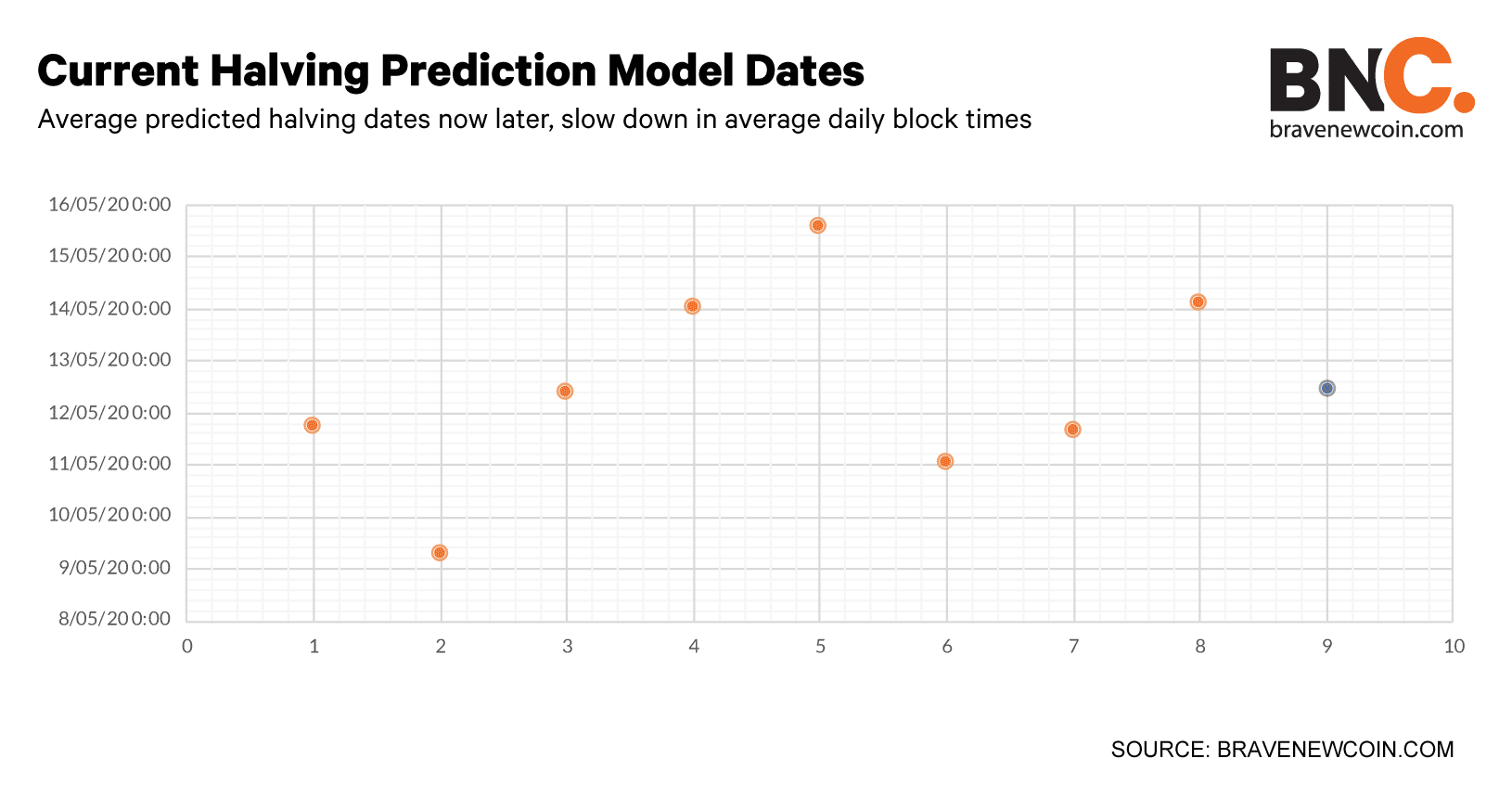
- Average predicted block halving date 16/02/2020 across the 8 different models= 12/05/2020 14:41
- Average predicted block halving date the week before across the 8 different models = 09/05/2020 01:45
- Difference= 84 hours & 56 minutes later
Date Convergence charts:
- Scenario 1: Average Daily Block Time
This is the average execution time of all Bitcoin blocks mined the day before. This model estimates the number of days left until the next halving, by multiplying the average daily block time by the number of blocks left to be mined before the next halving. Using this measure we calculate the timestamp for next halving.

- Average predicted halving date (first observation 01/01/2019) = 12/05/2020 17:51
- Predicted halving date on 16/02/2020 = 11/05/2020
Scenario 2: Cumulative Average Block Time:
This is the cumulative numerical average of execution time of all Bitcoin blocks mined till the present day. In order to remove the long gap between the initial block execution, the average block time between those blocks is taken as 600 seconds. In this scenario BNC estimates the number of days left until the next halving by multiplying the cumulative average block time with the number of blocks left to be mined.
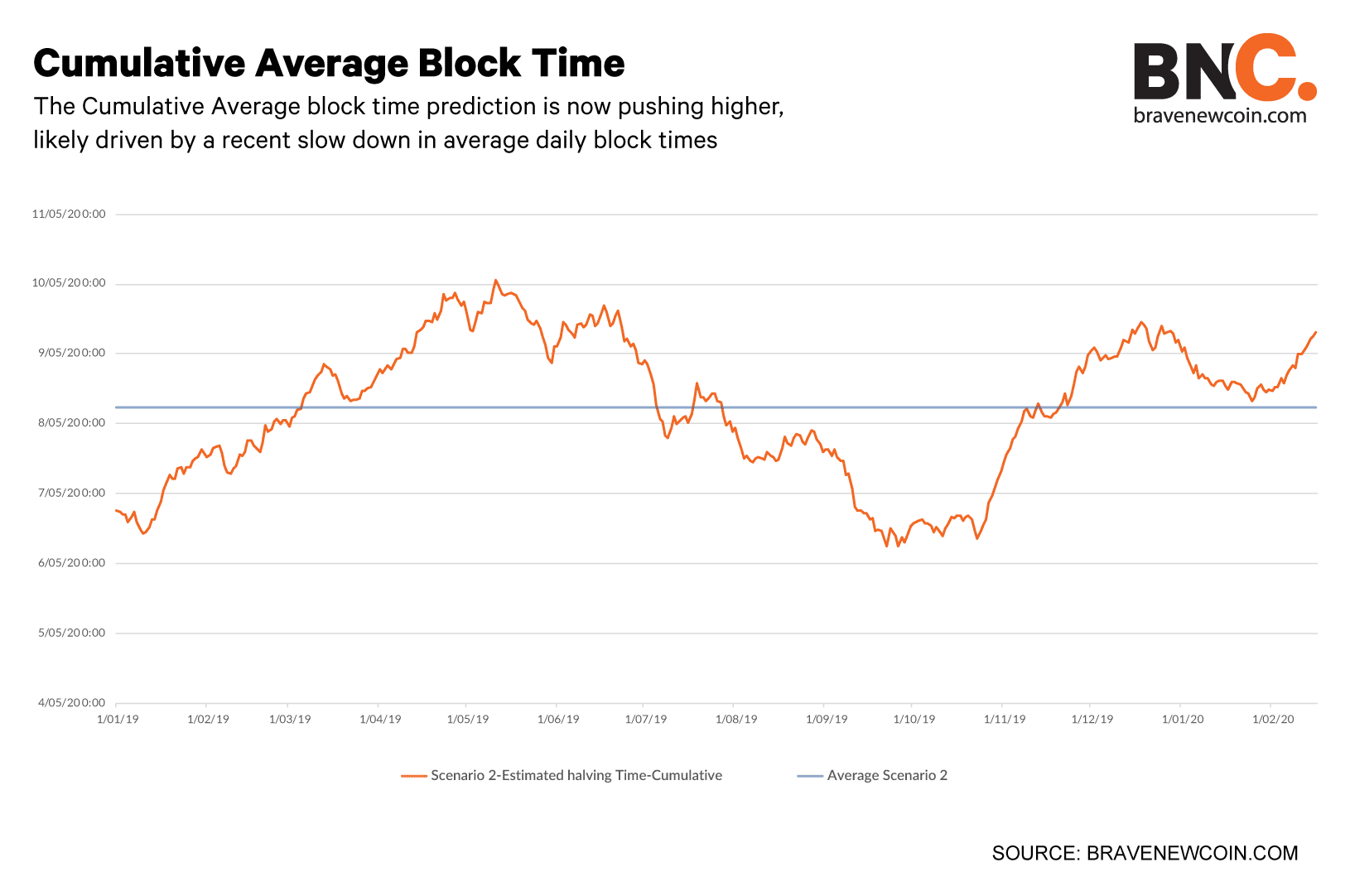
- Average predicted halving date (first observation 01/01/2019) = 08/05/2020 05:43
- Predicted halving date on 16/02/2020 = 09/05/2020 07:26
Scenario 3: Simple Moving Average Block Time 50 day
This is an arithmetic moving average of all block times calculated by adding the average block time of blocks executed each day for the last 50 days of the period. This is a lagging technical indicator which applies an equal weight to all observations over the period for determining if the block time will continue to have the same trend or reverse it. If the simple moving average points up, this explains the increase in the number of blocks execution which means the halving date will arrive faster than expected. If it is pointing down it means that the blocks executed will decrease on a daily basis and the halving date will move further away.
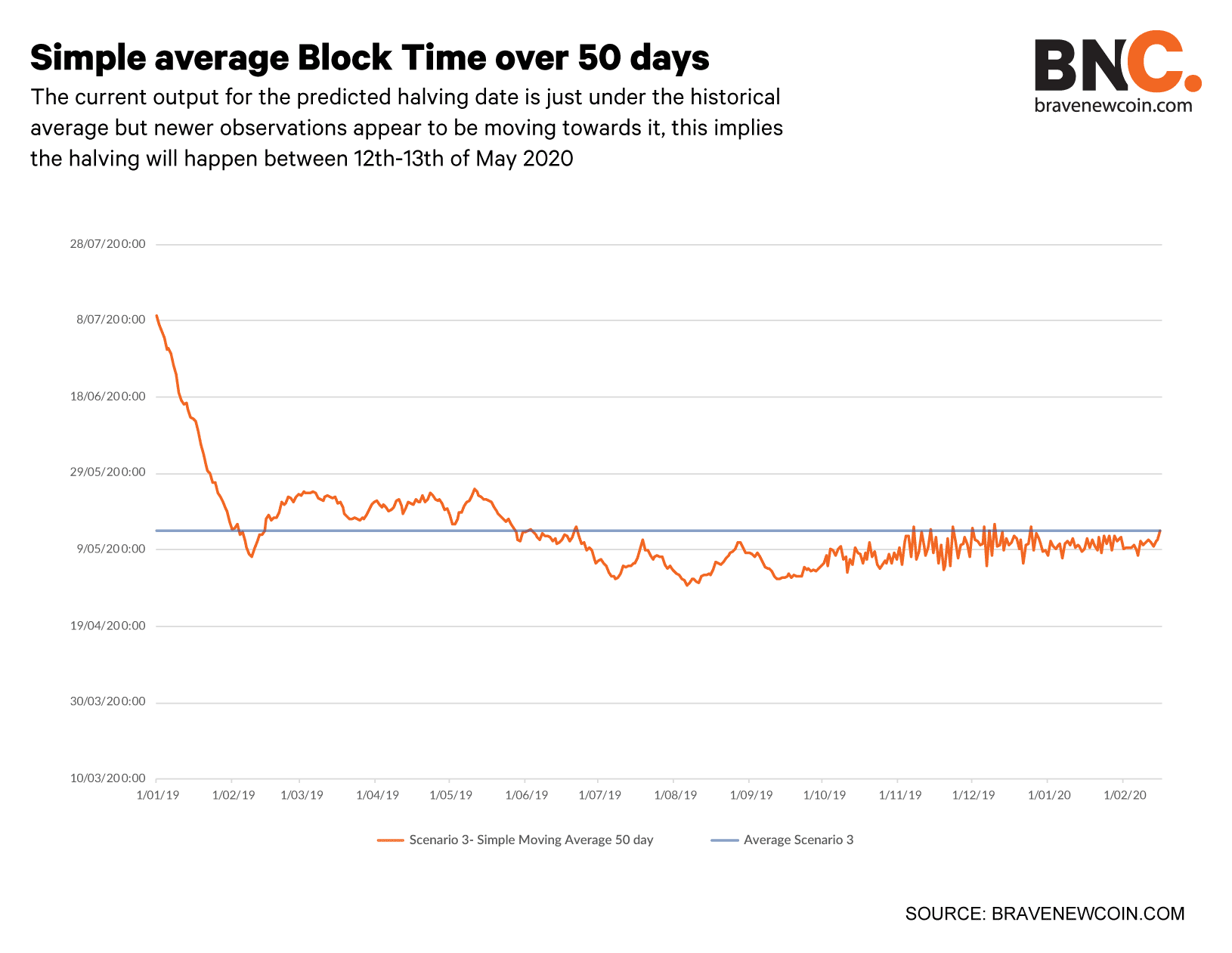
- Average predicted halving date (first observation 01/01/2019) = 13/05/2020 23:41
- Predicted halving date on 16/02/2020 = 11/05/2020 15:22
Scenario 4:
This is a type of moving average where a greater significance is given to the most recent average block times. This provides good signals on crossovers and divergences from the historical average block time. This is a lagging technical indicator. When the average block time crosses the moving average block time, the large changes are expected in the average block time, where the trend changes direction. As EMA provides higher weight to the recent daily average block time than on older data, it is more reactive to the latest block time changes.
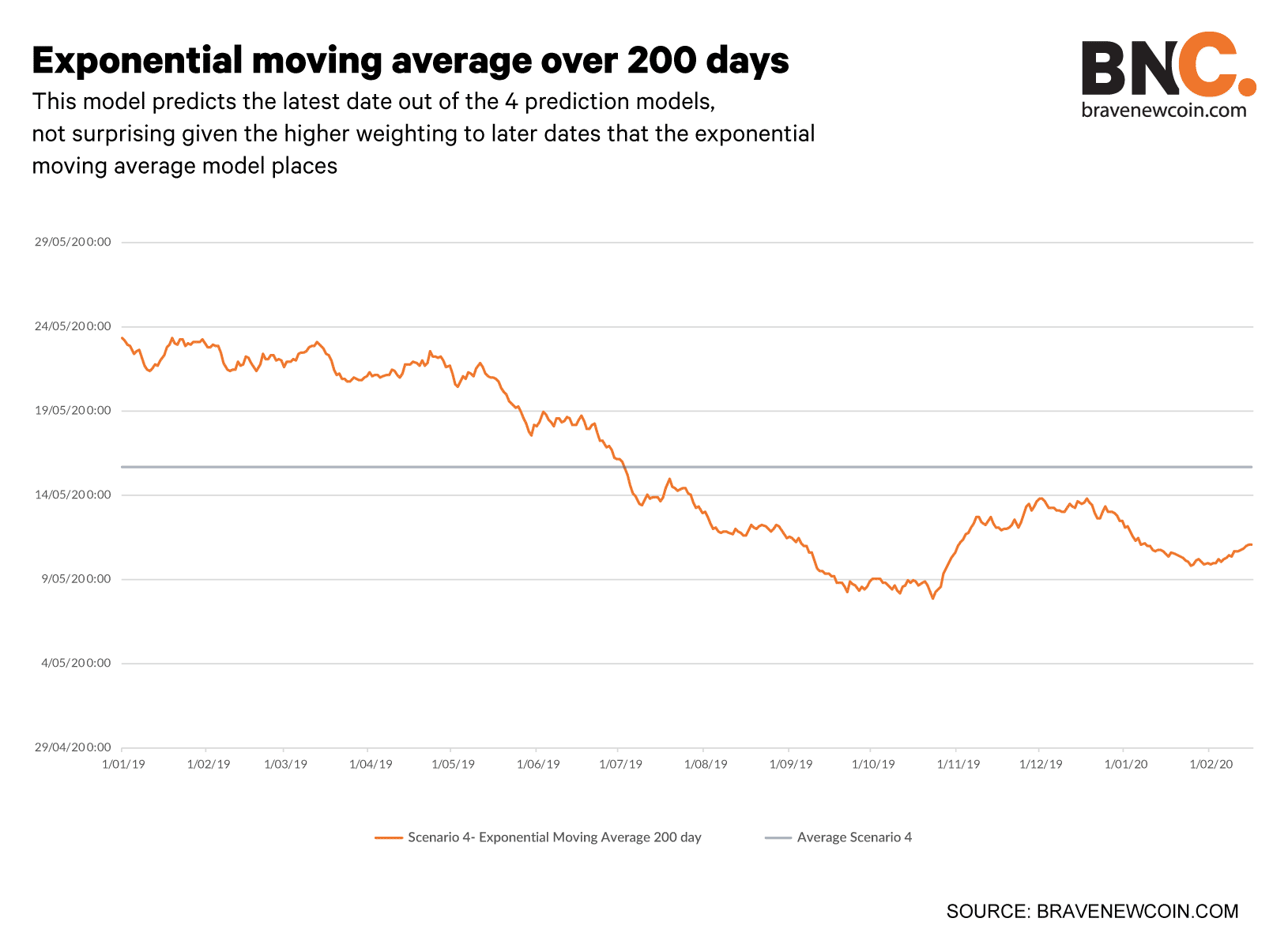
- Average predicted halving date (first observation 01/01/2019) = 15/05/2020 16:13
- Predicted halving date on 16/02/2020 = 14/05/2020 02:56
Network fundamentals
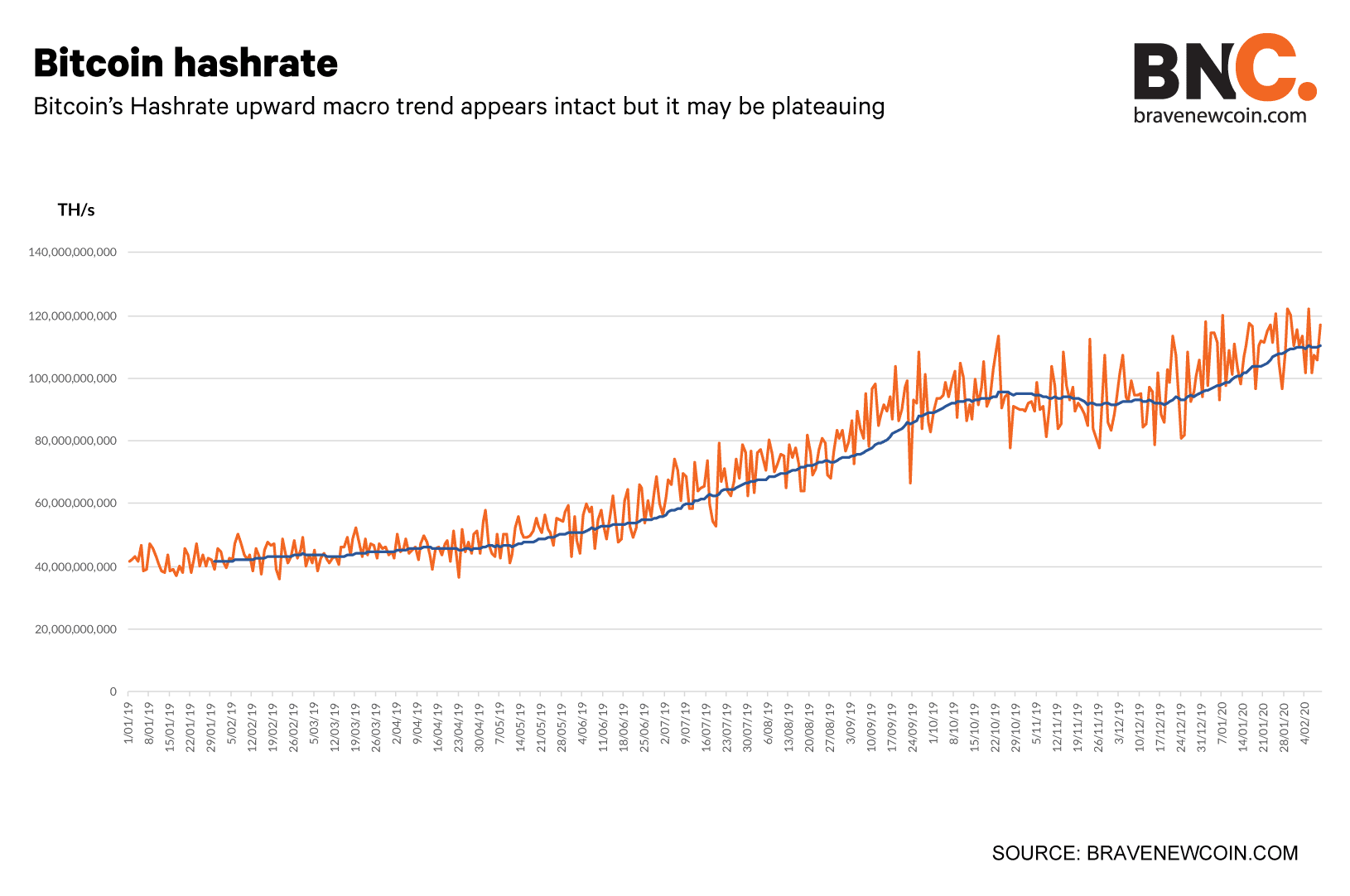
- Average Daily Hashrate from 02/02/2020-09/02/2020= 108,821,302,672 Th/s
- Average Daily Hashrate the week before= 109,945,965,294 Th/s
- Percentage change= -1.02%
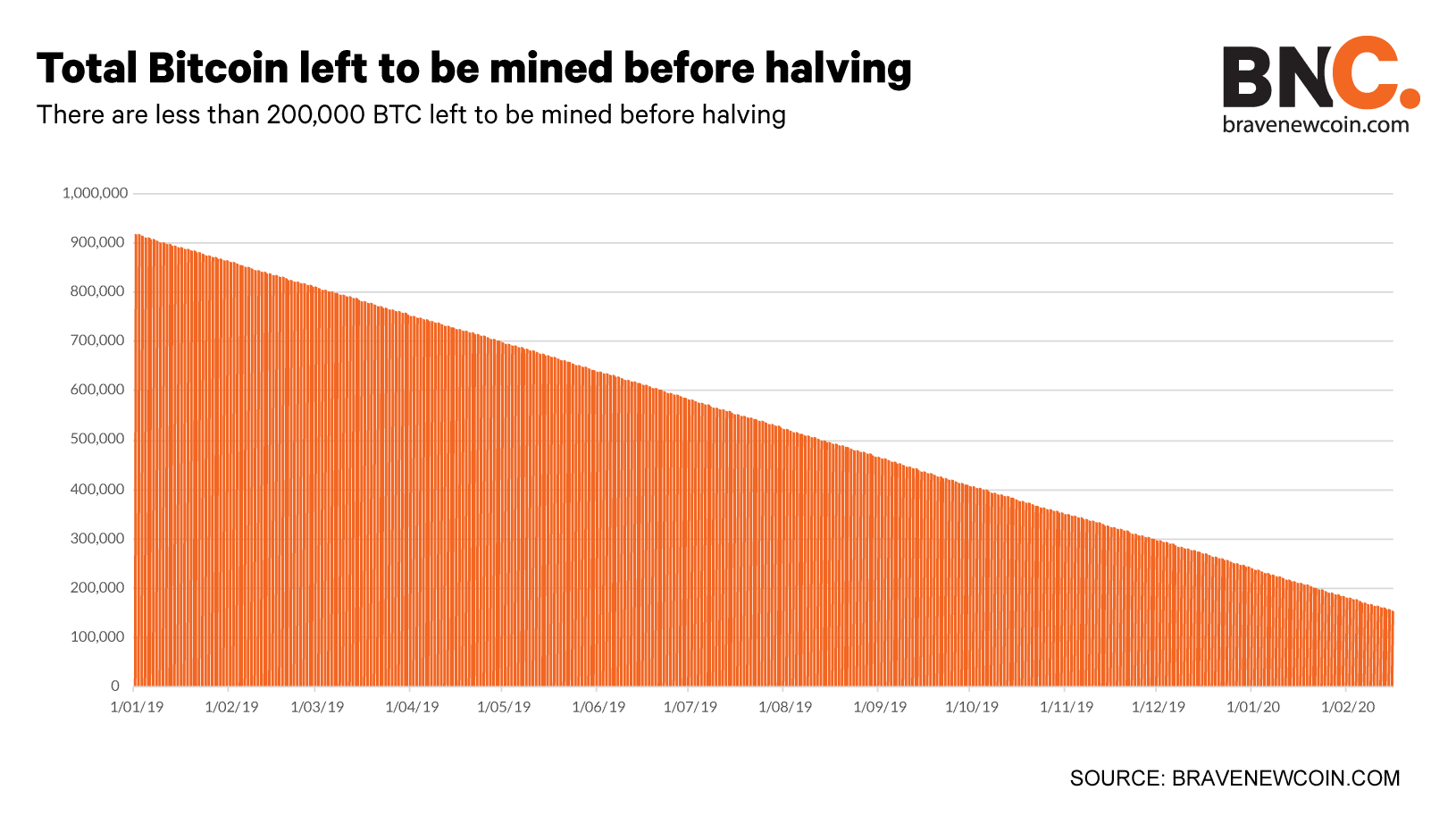
- Bitcoin left to be mined before the halving as of 16/02/2020= 153762.5 btc
OhNoCrypto
via https://www.ohnocrypto.com
Aditya Das, Khareem Sudlow
